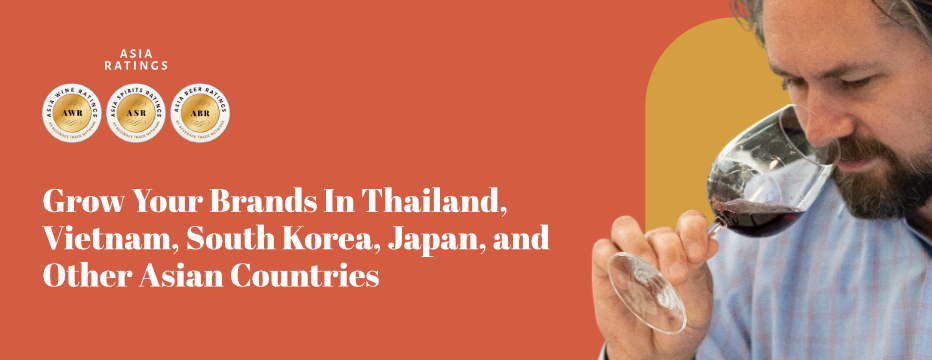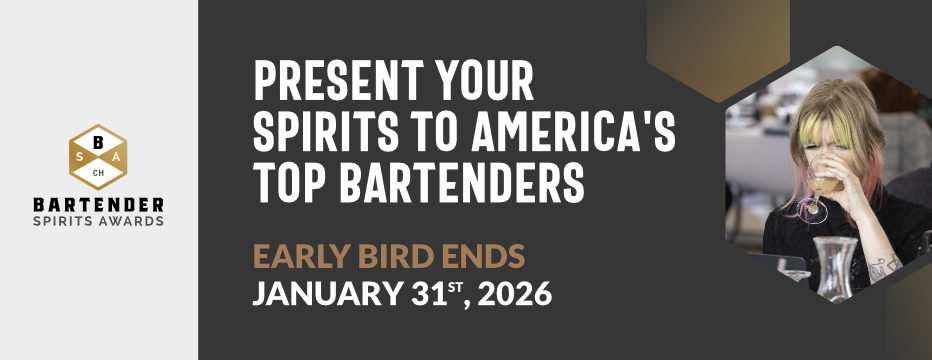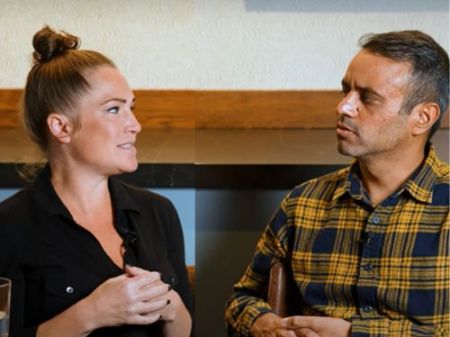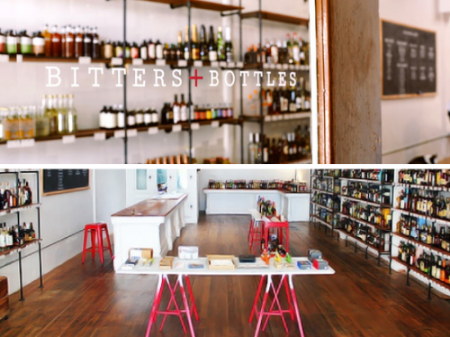Sommeliers Choice Awards 2025 Winners
Building Global Success: ECA Chair Dianne Tipping on Australian Wine and Spirits Exports
Dianne Tipping explains ECA’s initiatives for growing Australian wine and spirits abroad.

In an increasingly competitive global market, Australian wine and spirits producers are finding essential support through the Export Council of Australia (ECA). Led by Chair Dianne Tipping, the ECA provides strategic training, guidance, and resources to help exporters succeed internationally. From leveraging reduced tariffs in China to identifying new opportunities in Asia, Dianne Tipping shares how ECA is paving the way for Australian wine and spirits to thrive abroad. In this exclusive interview, she discusses ECA’s role in fostering market growth, especially as the industry navigates emerging markets and aims to maintain its stronghold in established regions like the UK and the US.
Dianne, how does the Export Council of Australia support wine and spirits producers in navigating international trade complexities and expanding their global footprint? Could you highlight any recent programs or initiatives by the Export Council that have significantly benefited Australian exporters?
The Export Council Australia is the peak body representing every player in the ecosystem of international trade. Our members are individuals, small, medium, and large enterprises, coming from different industries and sectors.
The Export Council supports all exporters through regular updates on news, policies, and regulations, training to build knowledge and skills, advocacy, and facilitating business relationships to help exporters exceed.
Further, we drill down to industry-specific training, networking, and promotions such as a recent Hunter Valley Wine Export Capability Building Workshop in conjunction with Investment NSW, HunterNet, and supported by the Hunter Valley Wine and Tourism Association (HVWTA), New South Wales Wine Industry Association (NSWWIA), and Export Finance Australia (EFA).

This program is one of many that the ECA participates in to promote, encourage, and upskill attendees on the export of Wine and Spirit products from Australia.
Additionally, NSW Distillers will be highlighted at this year’s NSW Export Awards. https://export.org.au/premiers-nsw-export-awards/
With China reducing tariffs on Australian wine, how do you see this affecting the Australian wine industry in the short and long term? Additionally, what strategies are being implemented to regain and expand market share in China, considering the challenges faced during the tariff period?
The reduction of tariffs by China is a significant development; in the short term, it is likely to lead to an increase in the volume of wine exported. Australia exported $86 million worth of wine into China within the first month after tariffs were removed. This includes $80 million from South Australia alone. The value growth was due to a surge in exports to mainland China in the last three months of the last fiscal year, as Australian wine re-stocked supply pipelines following the removal of the duties on Australian bottled wine.
Statistically Australian wine exports increased overall in value by 17 percent to $2.2 billion in 2023–24, the highest level since the 12 months ended September 2021, and volume remained steady at 619 million litres according to Wine Australia’s Export Report.
While this figure is impressive and a cause of celebration for a struggling sector, most industry spokespeople believe that the Chinese market is unlikely to rebound to its 2020 state.
It will take some time before there is a clearer picture of how Chinese consumers are responding to the increased availability of Australian wine in the market. Consumption of both domestic and imported wines in mainland China is less than a third of what it was six years ago and thus it is very unlikely that Australian wine exports will return to those previous peaks in the short to medium term. Long term the wine market globally is changing.
Beyond China, which Asian markets do you identify as the top five emerging destinations for Australian wine exports, and why?
Several Asian markets present promising opportunities for Australian wine exports, each offering unique advantages due to their growing economies, expanding middle classes, and increasing interest in wine.
Japan, South Korea, Thailand, Vietnam, and Singapore would be in the top five, each of these markets presents unique opportunities for Australian wine exporters.
- Japan has an established wine culture and a high-value market.
- South Korea is an expanding market with favorable trade agreements.
- Thailand has a growing middle class and increased wine awareness.
- Vietnam currently has rapid economic growth and rising wine interest.
- Singapore is a high-income market and strategic regional hub.
The rise in tourism and the expanding middle class are driving the demand for imported wines.
These markets are attractive due to their economic growth, increasing wine consumption, (off low bases), and the rising preference for premium wines. Each of these destinations offers unique opportunities for Australian wine exporters to expand their presence in Asia. Also, India should not be overlooked due to its rapid economic growth and increasing disposable income along with a growing wine culture and youthful population with a growing interest in global lifestyle. The Australia-India Economic Cooperation and Trade Agreement (ECTA) is currently in place and negotiations for the Comprehensive Economic Cooperation Agreement (CECA) have resumed building upon ECTA outcomes to capitalize on the potential for closer economic ties between Australia and India.

Image: The ECA hosted another luncheon to celebrate exporters’ achievements, fostering valuable connections and partnerships. This event highlighted ASEAN growth opportunities and inspired exporter stories.
Can you provide insights into the consumer trends and preferences in these markets that make them particularly promising for Australian wines?
Markets such as those noted already are currently driven by rising incomes and a growing middle class creating opportunities for premium wine. Younger, urban populations are more open to trying new and international products. Increased exposure to global lifestyles and cuisines enhancing interest in wine and growing wine education and awareness is leading to improved knowledge and wine culture fostering a greater appreciation and demand.
Consumer preferences in the wine market are shifting towards more sustainable and organic options. Price points are becoming less of a determining factor for wine purchases, with quality and brand story gaining importance. Millennials and Gen Z are emerging as influential consumer groups in the wine industry. Online sales and direct-to-consumer channels are growing in popularity for wine purchases.
Each market has its own local factors, however, some of the common trends globally for wine companies to consider is the declining alcohol consumption overall - as moderation behaviors grow especially among younger consumers, and growing competition at social and non-food occasions from other beverage alcohol categories, such as Ready to Drink offerings.
Low-alcohol and no-alcohol wines will also dominate. Innovation in low-alcohol wine in the US is increasing as is no-alcohol wine volume consumption. There is also a greater reliance on and trust in retailers and on-premises operators to curate interesting products for consumers.
Quality and value are at the forefront of the future of wine. Points such as the grape variety, vineyard practices, winemaking techniques, and the final sensory profile of the wine. Value, on the other hand, is often perceived through the lens of price, reputation, and consumer satisfaction.
In the premium wine market, quality is not just about the taste but also about the wine’s typicity, which refers to how well a wine represents its region and grape variety. Wineries actively influence quality perception through branding, marketing, and participation in wine shows and competitions.
Australian wine is well-equipped to meet these demands. Looking at growth opportunities for exports, global sales of commercial wines (less than US$10 per bottle) have been declining. Premium wine sales ($US10 or more per bottle) have been rising but growth has been impacted by the soaring cost of living around the globe in the past couple of years but is forecast to grow.
The US and UK have long been significant markets for Australian wine. What measures are you focusing on to maintain and potentially grow market share in these countries?
The Export Council Australia focuses on growing market share for Australian exporters by working with and supporting both the Australian Government and the State Governments through skilling participants for trade missions to the US and the UK (and other Global destinations).
As an example, upcoming trade missions for the NSW Government include:
- Organic wine, food and beverage to the USA (October 2024 - March 2025)
- Wine and Beverage, Food to the United Kingdom (September - March 2025)
- Wine and Beverage to Korea (January - May 2025)
- Wine and Beverage, Food to Japan (January - June 2025)
- Wine and Beverage to Vietnam (TBC)
Chosen participants will have access to:
Online workshops, market intelligence briefings, cultural training, potential partner introductions, business matching market visit programs, in-market assistance, and logistical support coaching from a dedicated Export Adviser and access to the NSW Trade and Investment Commissioner in-market.
Participants will gain:
- An understanding of market dynamics
- Practical approaches for doing business in the target market.
- Opportunities to identify and engage with new customers in the target market.
- Opportunities for networking with global businesses and entrepreneurs
- Opportunities for global promotion
- Opportunities for peer interaction with the businesses in your cohort.
We are also presenting with Investment NSW an upcoming workshop (30/08/2024) on opportunities in the Korean, Indian, and Japanese markets using the benefits of the FTAs that Australia has with each of these countries.

Images: ECA’s Chair Dianne Tipping moderated a panel discussion with exporters as part of Investment NSW's ASEAN Export Capability Building Workshop.
How are changing consumer preferences in the US and UK impacting Australian wine exports, and how is the industry adapting?
Australian producers are very aware of the need to be flexible, adapt, and adjust to market tastes and trends.
For example, the demand for:
- Healthier lower alcohol and organic wines
- Sustainability in farming, packaging, carbon neutral
- Unique wine styles, (less mainstream, lesser-known varietals)
- Convenience (online shopping, direct-to-consumer)
Producers are focusing on health-conscious and sustainable products, expanding their range of offerings, enhancing their online presence, and emphasizing quality and value. By responding to these trends and leveraging innovative strategies, Australian wine exporters can effectively maintain and grow their market share.
Australian spirits have been recognized for their quality in international markets. Can you share some data on export volumes and growth trends for Australian spirits?
The Australian spirits industry has seen significant growth in recent years.
Current Export Value: In 2022, Australian spirits exports were valued at approximately $210 million.
Future Potential: With the right policy settings, the industry could grow to a $1 billion export market by 2035.
Industry Challenges: Despite the growth, the industry faces challenges such as high excise taxes, which limit the ability of distilleries to scale and attract investment.
The Australian spirits industry is on a promising trajectory, with substantial potential for further expansion in international markets. The increase in Australian spirits exports outpaced beer and wine. International trends in spirits for which Australian Distilleries are well geared are dessert-inspired spirits which sweeten consumers’ palates. Younger consumers, particularly millennials, do not demand traditional beverages that their older peers may have indulged in. Demand has shifted away from bitter and malt-based beverages, instead towards fruity, more exciting flavours.
[[relatedPurchasesItems-31]]
What are the key factors contributing to the success of Australian spirits abroad, and what challenges do producers face in scaling up exports?
Success comes from primarily the quality and craftsmanship of Australian Spirits. Premium ingredients and traditional methods contribute to their superior taste and appeal.
The unique Australian environment in which the core ingredients are grown along with native botanicals and flavours set Australian Spirits apart from competitors.
As an example, there is one small distillery on Lord Howe Island – an Australian Island off the coast of NSW. Lord Howe Island is a unique World Heritage Destination. Lord Howe Distillery relies on the local rainwater and uses 114 Endemic Botanicals found nowhere else on earth to produce their spirits. The stories from Australian distilleries are unique and offer a wonderful taste of Australia within their product. This is all about branding - branding utilizing Australian themes, highlighting their origin, and production methods to enhance their appeal to international markets.

Image: Business Partners of Lord Howe Distillery; (L-R)Anthony Riddle and Christian Young.
The growing global interest in craft spirits has benefited Australian producers who emphasize small-batch, handcrafted products. Along with international awards and accolades bolstering the reputation of Australian spirits, leading to increased visibility and consumer interest.
Australian distillers are known for their creativity, introducing novel flavour profiles, experimental blends, and artisanal techniques. They are willing to adapt their products to suit the palates of the country to which they are exporting.
Authentication methods and traceability systems designed to protect wine/spirits provenance and quality have gained the interest of international consumers. Australia is a leader in this field.
However, the challenges in scaling up production include regulations, tariffs, taxes, and maintaining quality, and can be challenging for some Australian distillers, particularly smaller or craft producers.
With your extensive career in international trade, how have you seen the global market for Australian wines and spirits evolve over the years?
There is increased international recognition for Australian wine and spirits with a shift towards premium and sustainable products and while there are challenges to be addressed if the industry maintains its commitment to quality and uniqueness, they are well-positioned to capitalize on future growth opportunities in the global market.
How effective has the collaboration between the Australian government and the wine and spirits industry been in promoting exports?
While collaboration between the Australian government and the wine and spirits industry has been instrumental in promoting exports, enhancing global competitiveness, and addressing key industry challenges there is still work to be done.
As stated in the March 2024 Mandela report ‘Spirits industry sector competitiveness plan’ “Australia’s spirits industry is at an inflection point where there are a considerable number of small distilleries with strong potential to grow under the right conditions”.
The Government could play a pivotal role in catalysing this industry to grow, which would also meet many of its own priorities – such as growing manufacturing and regional jobs.
The Government can work with the industry to attract investment, build industry capability, streamline regulation, and provide access to markets.
Lessons from the Australian wine industry, as well as in the UK and Japan, show that a freeze on the excise tax and consideration of broader tax reform, as well as establishing ‘Spirits Australia,’ are two immediate steps the Government can take to generate significant value for the industry.

Image: At a recent roundtable hosted by ECA & Supply Nation, key challenges were discussed.
Are there any specific policies or initiatives you believe are crucial for the future growth of Australian wine and spirits exports?
Absolutely, there are several key policies and initiatives that could significantly boost the future growth of Australian wine and spirits exports:
Market Diversification: Expanding into new markets, such as India, where the wine industry is already working on “long-horizon” strategies to grow wine exports. This includes removing trade barriers and improving market access. The current FTA has gone some way in assisting with this.
Tax Reforms: Freezing the twice-yearly increases to Australia’s spirits tax could provide a more stable environment for growth. Establishing a dedicated body like ‘Spirits Australia' to support the industry could also help.
Government Investment: Seeking substantial government investment, to boost exports, enhance wine/distillery tourism, and support innovation.
Re-engagement with China: Following the removal of duties on Australian bottled wine, re-establishing and growing exports to mainland China is crucial. This market has shown significant potential, with a recent surge in exports.
Sustainability Initiatives: Emphasizing sustainable practices in wine and spirits production can appeal to environmentally conscious consumers and open new market opportunities.
These initiatives, combined with a focus on quality and innovation, can help ensure the long-term growth and competitiveness of Australian wine and spirits in the global market. The Government can help unlock the potential of the spirits industry to capture this $1 billion export opportunity. Australia’s spirits industry is at an inflection point. There is growing global demand for premium spirits, including in neighboring countries in Asia, and a large base of small distillers looking to scale.
To realize this opportunity the industry will need support to attract investment, build industry capability, streamline regulations, and access markets. This will in turn deliver significant benefits which are aligned with national economic priorities.
The Export Council Australia as a peak industry body will continue to support by upskilling and advocating for more incentives and assistance, which is crucial for expanding this vital export market.
Conclusion:
The future of the Australian wine and spirits industry looks promising, driven by a commitment to quality, innovation, and adaptability. As global markets evolve, Australian producers are finding success by embracing these values and leveraging new opportunities. Under Dianne Tipping's leadership, the Export Council of Australia continues to play a vital role in this journey, supporting the industry in navigating changing consumer preferences, emerging markets, and the ever-shifting landscape of international trade. With a strong focus on excellence and a readiness to adapt, Australian wine and spirits are not just competing but winning on the world stage, positioning themselves for long-term success.
In conversation with Malvika Patel, Editor and VP, Beverage Trade Network






















